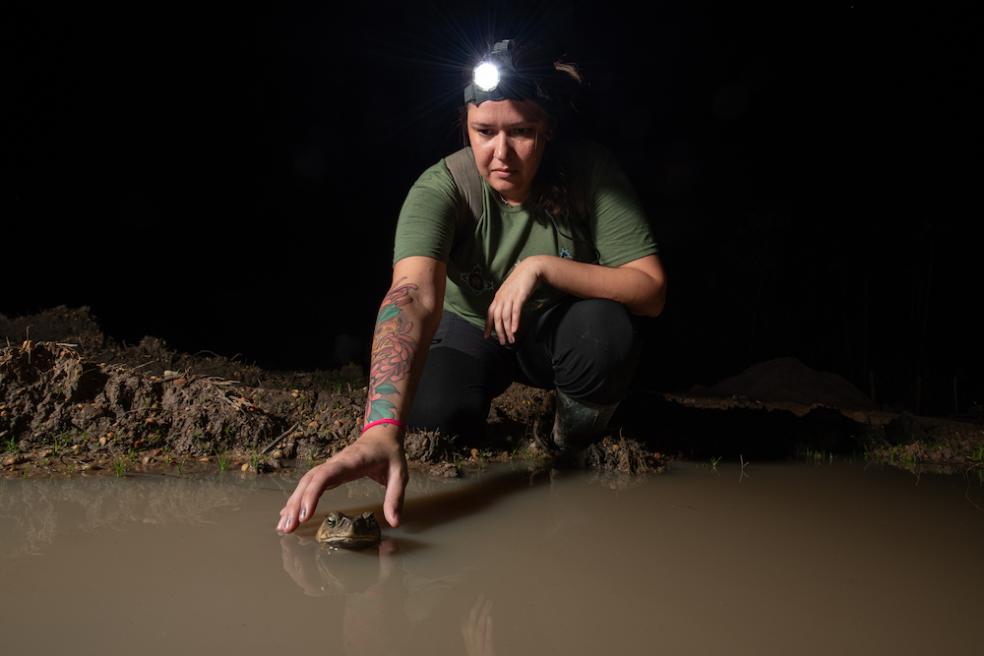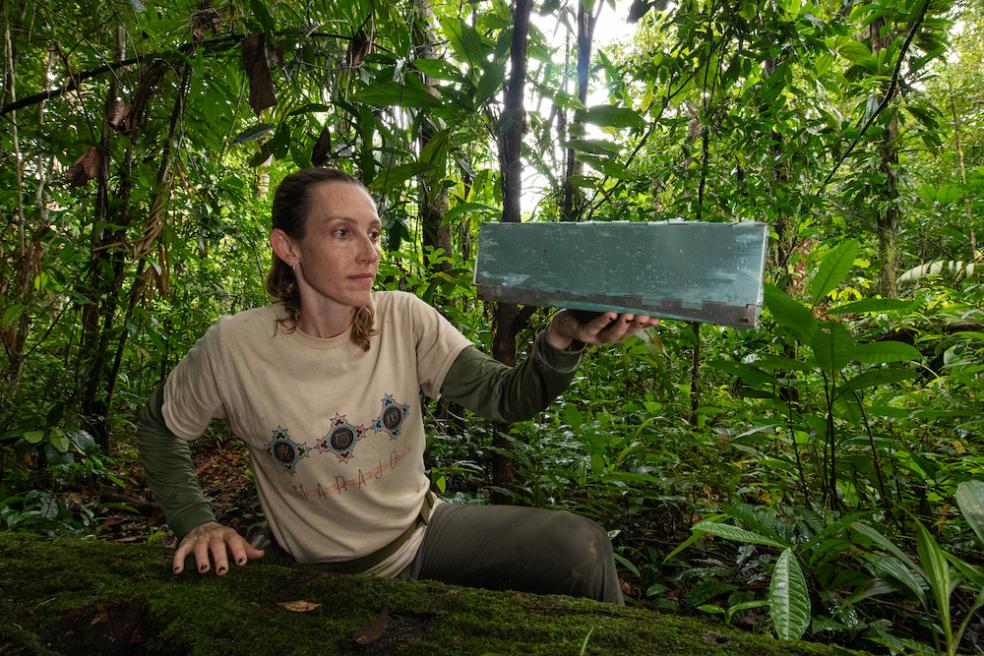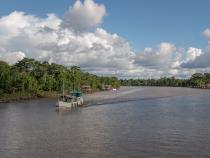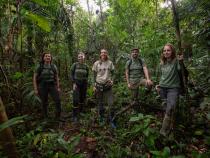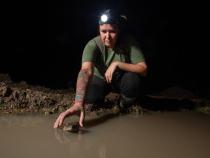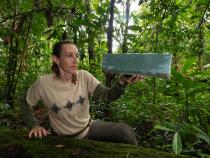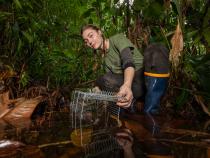Marajó Island—located in northern Brazil where the Amazon River meets the Atlantic Ocean—is home to rich wildlife, yet little is known about how its animals got there or whether they’ve changed since arriving. Now, researchers are gathering and analyzing DNA for clues.
The project is led by Cal Poly Humboldt Zoology Professors Silvia Pavan and Pedro Peloso and by Angelo State University Biology Professor Edson Abreu, in collaboration with researchers and students from across the U.S. and Brazil. The team is exploring how and when different species reached the island—and whether they’ve evolved to fit Marajó’s distinct environments.
There are two different types of landscapes on Marajó. Its western side is covered in rainforest, while open grasslands dominate the east.
“The island has a dynamic history that includes a relatively recent separation from the mainland (during the past 2 million years or even more recent) and a marked division into a densely forested west and mostly open habitats at the east,” Pavan says. “This makes the island a natural evolutionary experiment to understand how animal communities have changed over time, both within Marajó and in relation to the mainland.”
Like Charles Darwin’s observations in the Galápagos Islands, Marajó serves as a natural laboratory where distinct habitats offer insight into how species diversify and adapt. With modern tools like DNA analysis, Pavan and Peloso are continuing the kind of evolutionary investigation Darwin began—only now at the genetic level.
The animal’s DNA, collected using field samples obtained during a visit to the island this past winter, will provide insight.
By studying the animals’ genetic makeup, the researchers hope to trace the routes these species took to colonize the island and discover how they've adapted—or not—depending on which part of Marajó they settled in.
Pavan and Peloso are collaborating with students and colleagues from Cal Poly Humboldt, Angelo State University in Texas, and Brazil. Together, the team traveled to remote parts of Marajó during December 2024 and January 2025 to collect tissue samples from several native species.
Their research focuses on seven small land-dwelling vertebrates. These include the Orange-legged Leaf Frog (Pithecopus hypochondrialis), Steindachner’s Dwarf Frog (Physalaemus ephippifer), the Bridled Forest Gecko (Gonatodes humeralis), Brown-eared Anole (Anolis fuscoauratus), Woodall’s Slender Opossum (Marmosops woodally), the Marajó Bristly Mouse (Neacomys marajoara), and the Brazilian Squirrel (Guerlinguetus aestuans).
The project offers hands-on training for students, helping to prepare the next generation of scientists. Students have been involved from the start—from planning and organizing the field expedition, learning field techniques in Brazil, to upcoming lab work in California.
To support this work, Cal Poly Humboldt is establishing a new historical DNA lab, expected to be fully operational by fall 2025. The lab will be equipped to extract DNA from preserved or degraded samples, including museum specimens and samples collected by the team directly from Marajó. It will allow students to gain experience in techniques rarely taught outside of major research institutions, Pavan explains.
In the next phase of the project, students will process and analyze genetic data from both Marajó and mainland Amazonia, contributing directly to research that explores how biodiversity emerges across time and place.
Preliminary results suggest that different species arrived on the island in different ways and at different times—some from the northern Amazon, others from the south. This hints at a complex evolutionary history, but more data is needed. The team will continue collecting and analyzing samples through 2027 to fill in the gaps.
The project aims to create a strong foundation of data on how species adapt to environmental changes. Ultimately, they hope their work will advance understanding of how life responds to change on both the local and global scale and informs conservation efforts.


